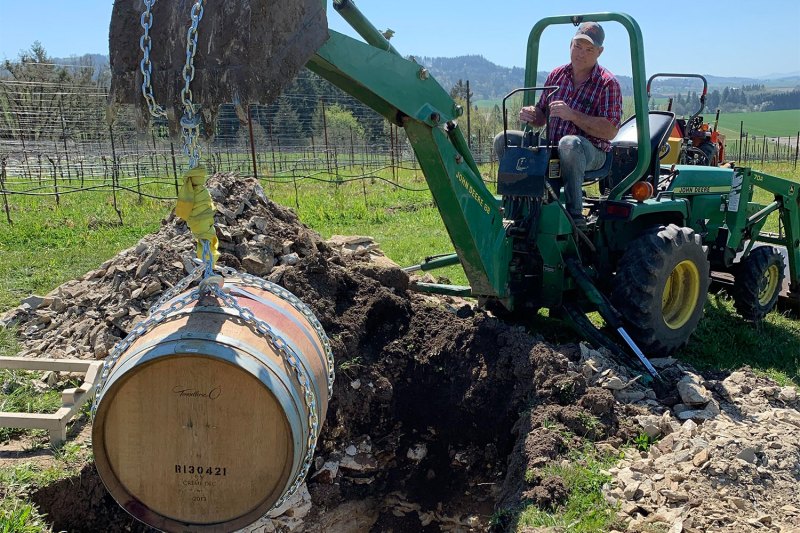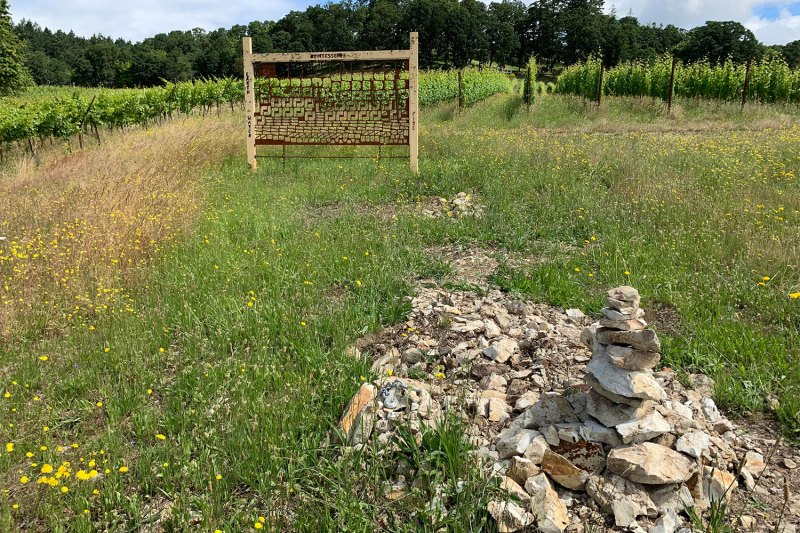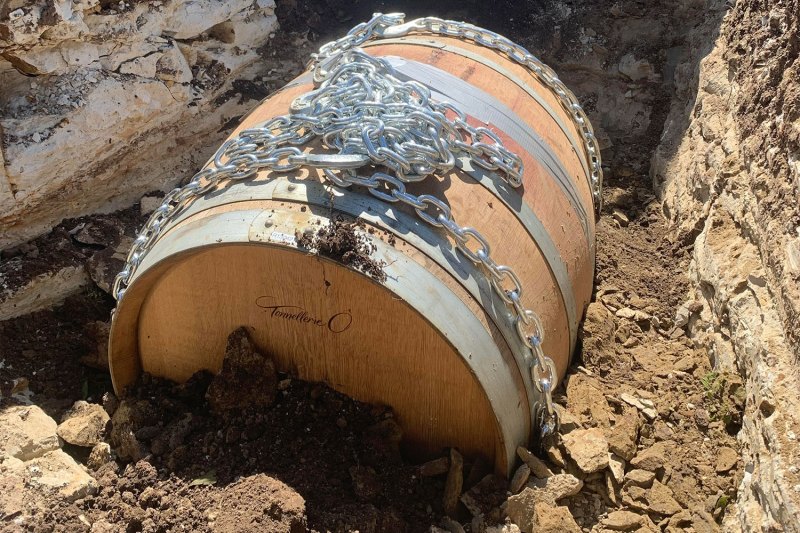As wine continues to trend towards the less-mechanized methods of the past, a question looms: What about doing it al fresco?
For most, outdoor winemaking happens unintentionally and out of necessity, during fruit-heavy years which lead to crammed cellars. Vintners will temporarily ferment or age wines outside, moving things back into the cellar as soon as there is room. After all, inside there is protection from the elements, climate control, and more accessibility.
A small legion of winemakers prefers the process be out in the open. There’s added risk, of course, but like free soloing or eating pufferfish, that’s part of the draw. And the results can be unique and even hark back to the winemaking approaches of several hundred or even several thousand years ago.

It can be especially appealing to the low-intervention winemaking crowd. This group likes things like wild and slow fermentations that reflect an on-nature’s-clock sort of enological philosophy. It’s also just cheaper, an important consideration in an industry that involves tons of expensive equipment that’s used just once a year. Hobby winemakers will often go this route, making too little volume to justify a separate structure.
There’s a new layer of potential appeal as well and, like just about everything these days, it related to the ongoing pandemic. With social distancing set to almost certainly be in effect this fall as harvest unfolds, winemakers may be looking for more creative ways to stay healthy on the job. That might include moving shop outside, where there’s more space and natural ventilation. The tasting element as well is likely to move outdoors, at least seasonally, as we’ve all read about the spikes that have come with opening up bars too soon.
Already, many labels process their fruit outside or at least in open-air environments. This goes down on crush pads, where the grapes clusters are typically scattered onto sorting tables, run through a de-stemmer, and put into a fermentation vessel of some kind. The equipment is substantial so this part of the process makes sense to do outside. Plus, there’s all kinds of disposing, rinsing, and forklift driving that’s easier done either outside or within a spacious winery.

Friend of The Manual Podcast and acclaimed wine writer Katherine Cole wrote a great piece on the subject over at SevenFifty Daily, citing producers like Thackrey & Company. The northern California winery takes advantage of an ideal climate for crafting wine outside and is inspired by methodology of ancient times. Others believe native fermentations move along better outside, where there’s likely more native material (indigenous yeast and other microbiology) in the air. Indoors, there may be a dominant commercial yeast strain doing all of the fermenting, despite efforts to keep it wild.
Most operations make wine indoors because making wine outside comes with its own host of issues. The weather is a key concern. Conditions too cold or too warm can stall a fermentation, produce off-flavors, or spoil a wine altogether. Moisture can rot equipment and damage oak barrels. If the air is hazy due to wildfire smoke, as it increasingly is especially during harvest on the West Coast, the wine can be adversely affected. Oh, and the bugs. Many insects love grape juice.
But we didn’t always have luxuries like temperature-controlled tanks. In fact, winemaking predates so many of the gadgetry that came with industrialization. It’s a big reason why underground cellars became so prominent, as the structures both protected from the elements and offered a stable, wine-friendly climate. And it’s fair to assume a lot of the preliminary work — the sorting, the fermentation, the pressing — took place outside back in the day.

Airflow is all the more important during the height of fermentation, when several lots of wine are busy turning sugar into alcohol. A byproduct of the process is CO2, which can be harmful in large doses. It’s common practice to sport an oxygen meter while shoveling out a tank just prior to pressing, for example. In fact, during my first Willamette Valley harvest at Cooper Mountain Vineyards, I recall the winemaker directing me to open the garage doors of the cellar and let the place air out for ten minutes before every shift. It beats fainting into a tank and possible drowning.
At Keeler Estate in Oregon, winemaker Kevin Healy has been experimenting with some outdoor winemaking projects. Last fall, he initiated one wine outdoors, fermenting for about nine days before being used as a starter to inoculate some other fermenters within the winery. “The idea was to capture the native yeasts from the vineyard and allow them to grow strong enough outside of the winery to deter any house or winery yeast strains from taking over,” he says.
Last spring, Healy buried an entire barrel of wine in the middle of his vineyard. It’s one of two identical blends of wine, one resting inside while the other sleeps six feet beneath his vineyard rows. “The buried barrel will stay under ground for one year and I’m hoping the steady cool temperature, lack of oxygen, and possibly influence from the soil will make for something interesting,” he says.


